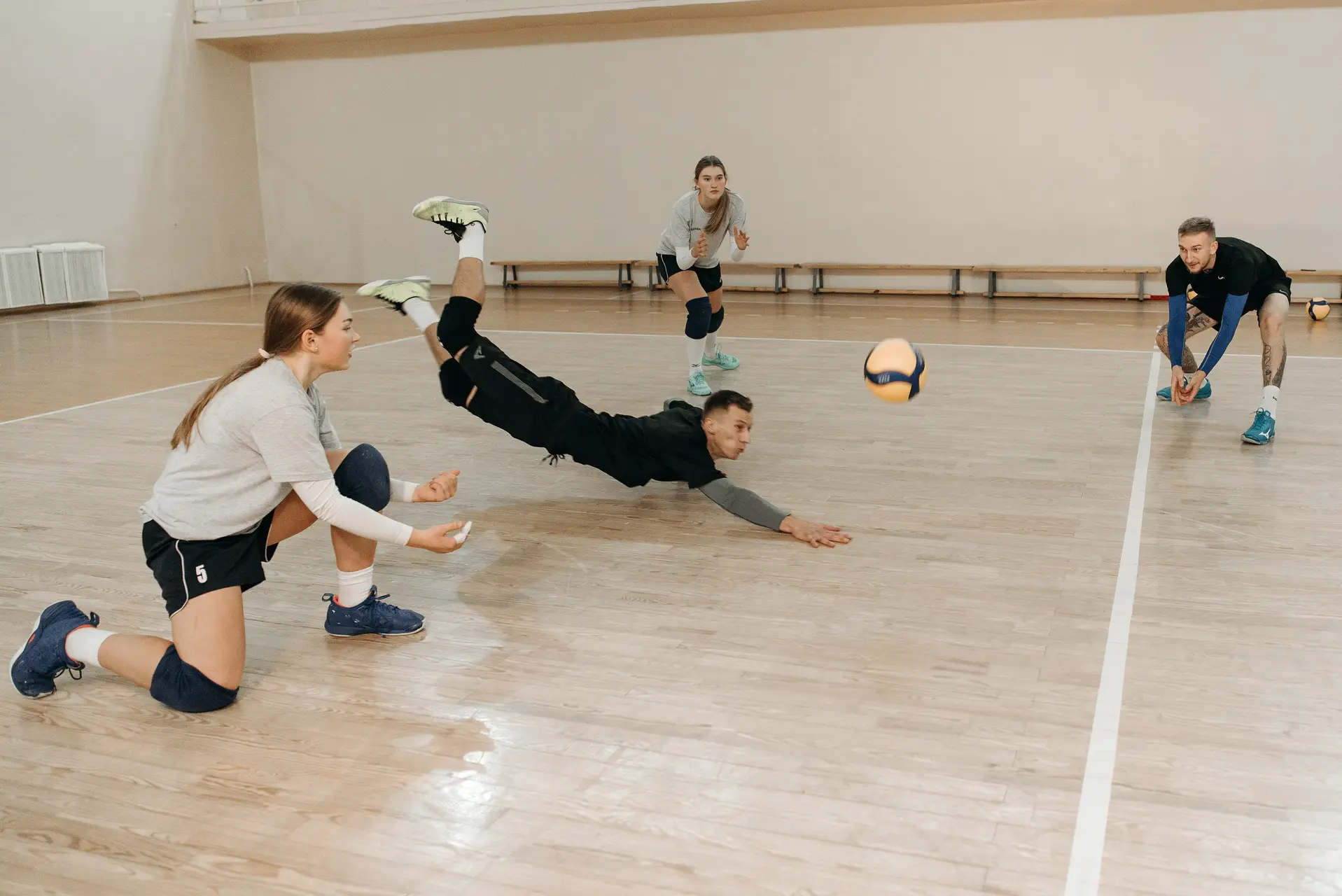
Digging
Volleyball is a sport known for its fast-paced action and thrilling spikes, but defense plays a crucial role in the game's dynamics. One of the fundamental defensive skills in volleyball is "digging." Digging is the act of receiving and controlling a spiked or powerful hit from the opposing team. It requires quick reflexes, precise positioning, and excellent ball-handling skills. In this article, we'll delve into the world of digging in volleyball and explore the techniques, strategies, and training required to become a proficient digger.
The Basics of Digging
Successful digging in volleyball involves several key elements:
- Proper Positioning: A well-trained volleyball player knows where to position themselves on the court based on the hitter's tendencies and the current game situation. Being in the right place at the right time is crucial for a successful dig.
- Quick Reflexes: The ability to react swiftly to a spiked ball is essential. The best diggers can read the hitter's body language and anticipate the direction and power of the hit.
- Low and Stable Body Position: Diggers need to maintain a low and stable body position, ensuring they are ready to move in any direction to receive the ball. This helps in maintaining balance and control.
- Proper Passing Technique: Once the ball is dug, it must be accurately passed to the setter. This requires excellent passing technique, with the goal of delivering the ball to the setter in a hittable position.
Reading the Hitter
Anticipating where the hitter will place the ball is a skill that separates good diggers from great ones. Reading the hitter involves paying attention to the hitter's body language, arm swing, and the trajectory of the ball. Here are some tips for reading the hitter:
- Watch the Hitter's Shoulder and Arm Position: A hitter's shoulders and arms can give away a lot about their intended shot. A high elbow and open shoulder usually indicate a cross-court shot, while a closed shoulder suggests an angle or line shot.
- Observe the Hitter's Approach: The speed and angle of the hitter's approach can offer clues about their intentions. A slow, flat approach may indicate a tip, while a fast and aggressive approach is often associated with a hard spike.
- Focus on the Hitter's Eyes: Hitters often look at where they intend to hit the ball. Paying attention to their eye movement can help you predict the direction of the shot.
Training for Digging
Becoming a proficient digger in volleyball requires dedicated training. Here are some essential drills and exercises that can help improve your digging skills:
- Reaction Time Drills: Work on your reflexes with drills that require quick reactions, such as rapid-fire digging exercises or reaction ball drills. These will help you become more responsive to fast-paced plays.
- Reading the Hitter Drills: Set up scenarios where you practice reading the hitter. This can involve teammates hitting balls with specific shots, and you trying to anticipate and dig the ball accordingly.
- Passing Drills: A significant part of digging is passing the ball accurately to the setter. Passing drills are crucial for developing this aspect of your game. Focus on footwork, platform, and ball control during these drills.
- Positioning Drills: Work on your court awareness and positioning through drills that simulate game situations. Practice moving to the right spot to dig based on the hitter's approach and shot selection.
- Live Game Situations: The best way to improve your digging skills is by playing in real game situations. Participate in practice games or competitive matches to apply what you've learned in training.
Strategies for Effective Digging
In addition to the technical aspects of digging, there are several strategies that can enhance your success in this fundamental defensive skill:
- Communication: Clear communication with your teammates is crucial. Let them know when you're in position to dig, and if you're unable to reach the ball, call for help. Coordination and teamwork are essential in defense.
- Change of Pace: Not all digs need to be powerful passes. Sometimes, a soft, controlled dig can catch the opposing team off guard. Mixing up your digs can keep the opponent guessing.
- Stay Relaxed: Tension in your arms and body can hinder your ability to control the ball. Stay relaxed and focus on precise ball contact. Let your technique do the work.
- Anticipate the Setter's Location: Always be aware of where the setter is positioned. Your goal is to deliver a pass that sets up the offense for a strong attack, so consider the setter's position when making your dig.
Conclusion
In volleyball, digging is a vital defensive skill that can change the course of a game. Successful digging requires a combination of proper positioning, quick reflexes, and the ability to read the hitter. Training and practice are essential to master this skill, and incorporating strategies like effective communication and varying your digs can make you a standout defender on the volleyball court. So, the next time you watch a thrilling volleyball match, pay attention to the players diving and making incredible saves on the court. Behind those incredible digs are countless hours of training and a deep understanding of the art of defense in volleyball.